Gurkhas, alongside their Australian and US counterparts, participated in the extensive Exercise Pacific Khukri.
The five-week training, located at the expansive Mount Bundey area near Darwin, tested and enhanced the Gurkhas’ urban and amphibious warfare skills while simultaneously fostering interoperability among the participating nations.
Soldiers from C Company, 1 Royal Gurkha Rifles (1 RGR), collaborated with members of the 5th Battalion, Royal Australian Regiment (5 RAR) and the 3rd Battalion, 1st Marines (3/1) to counter a simulated threat.
Major Jack Millar, Officer Commanding C Company 1 RGR, expressed the significance of such exercises: “We really value training opportunities like this. The exercise was planned with input from both the US and Australian military planners. It has given us the opportunity to practise synchronising our efforts and demonstrate our power when working as one force.”
Corporal Sam Concilaldi, a Mortar Section Leader from 1st Marines 3/1, emphasised the goal of integration: “Our main focus during the exercise is to integrate with the Australians and the Gurkhas and work towards one team. We do things a lot different sometimes, other things we do the same. Our main goal is building a good relationship and try and work together the best we can.”
Challenged by the sweltering heat, which sometimes reached 38°C, the Gurkhas undertook rigorous urban combat training. This involved street-by-street and building-by-building combat. The Gurkhas also collaborated with Australian combat engineers, who assisted in blasting entryways and disarming boobytraps. Additionally, the forces honed their amphibious warfare capabilities, simulating beach assaults using landing crafts.
1 RGR, specialising as the Army’s jungle infantry, is stationed in Brunei but alternates with its sister battalion, 2 RGR, in Shorncliffe, Kent, as part of the 16 Air Assault Brigade Combat Team, which represents the British Army’s global response force.


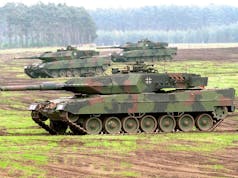
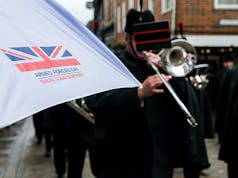
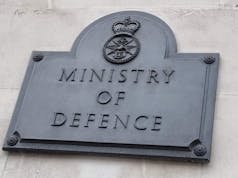
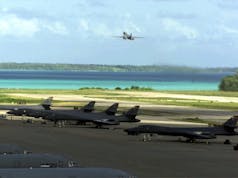
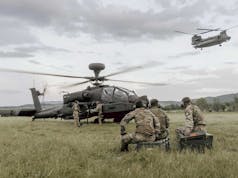

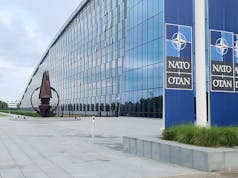
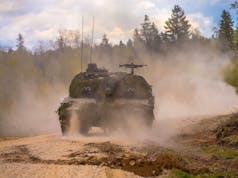

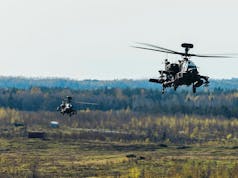

Seems like a plan. We may well become more reliant on the Gurkhas to back fill our shrinking Army, if the numbers continue to fall.
The current political spin is to simply keep cutting force structure, putting a new line in the sand every SDSR, to make it look like ‘part of the grand plan’.
I think we should have a sweep stake as to the size of the Army in SDSR 2030, I’m going with 60,000 based on the current rate of decline.
Unfortunately, I genuinely fear 60,000 might well be an inspirational target by then, with the numbers dropped below that mark.
The only way to change this is with a radical rethink, to make it a more attractive career path with long term prospects.
Alas, there’s little sign of any real ambition to change anything…..
Army recruitment numbers always go back up in times of high unemployment and when there is a war on, there are always plenty of young men willing to go off to fight when a war is on and army’s can be rebuilt in a year or two, Ukraine gone form 60,000 to 1 million in under two years. We did much the same between 1939 and 1941. Army always met it targets when we were in Afghanistan and Iraq.
Better to focus our resources on something we are good at and can achieve at scale like the navy, an Army of 60,000 if properly equipped will be fine.
It’s also pretty easy to massively expand units like the Gurkhas or re establish units like the East African Rifles if required in an emergency.
Very few countries can access global manpower like the UK can in times of war.
What a load of absolute bollocks! Are you seriously proposing that the Army be cut to just 60,000? And you think the Army can turn out fully trained people capable of using modern kit in a year? Where do you dream this stuff up?
I don’t think ur reading what he wrote right. First he said at the current rate of decline 60,000 at SDR 2030 would be the army size. That’s just speculation based on previous reductions.
He then said 60,000 properly equipped troops would be fine. Which 60k properly equipped troops is better than 100,000 badly equipped/trained troops.
Military numbers can swell easily if people are willing and equipment is there. Not every role takes years of training. Drivers, warehouse, supplies, catering, admin and so on.
The army needs to move away from calculating strength on the number of soldiers.
Imagine if the Navy or Airforce did the same.
It’s should be about the affect generated not the number of people required to generate an effect.
The UK is too small to have large number of bodies in a peace time army doing little else than sucking up resources.
Investing in items like long range precision fires and autonomous systems is the way to play to our strengths.
Not counting bayonets.
“The UK is too small to have large number of bodies in a peace time army doing little else than sucking up resources.”
This is the forest-for-the-trees point that a lot of posters don’t take into account. The MOD has obviously massive expenses and in order to inch up spending given a static budget (say 2 percent of GDP), you need to grow the tax base. It is a balancing act for any country let alone an island.
Why don’t you try actually reading what I wrote?
Then show me the bit where I said turn out fully trained troops in a year?
why do we need an army of 72,000 what’s the difference with that and 60,000 in terms of strategic effect.
Agree to a point. I always term it regarding the number of deployable brigades.
The headline figure of so many K is meaningless if they’re not armed, organised and resourced correctly.
Be it 77k, 73k or 72k.
60k is a drop way too far though.
Yes you can actually train a solider in a year…Finland churns out around 27,000 trained soldiers every year…and on one including the Soviet Union in its prime considered Finlands army a joke or anything other than a place you would not get your army back from if you invaded…..So you can develop systems that allows for swift training and development of manpower..it’s how Finland has managed it neutrally for 75+ years with a standing army of just 3000 regulars..but they work their manpower so that at anyone time they have 18,400 conscripts in for six months to a years training..then 18,400 reservists in for refresher training….with a planned wartime establishment of 160,000. It’s a system that’s entire function is to train and refresh a very large body of reservist who are able to operate Finlands very modern equipment, but without the cost to a society with a small population ( 5 million) of maintaining a large standing army ( a conscript is essentially a full time trainee solider for the entire conscription period with almost no other function). This conscript army operates 200 leopard 2s, 100 CV90s 100BMP2MD, 1200 APCs, 500 Viking type articulated tracked APCs as well as more fires than the British army could dream of including A automatic twin barrelled 120mm self propelled mortar, K-9 thunder, M270 topped off by no less that all a thousand towed fires and many thousands of mortars…anti tank wise, NLAW, APILAS, Spike ML and LR, TOW, (well over 100,000 anti tank missiles) with 11 mine types..and 650 drones in 5 types….if they can train a reservists army of 180,000 on all that…it proves that you can actually train up an army swiftly if you have the will, the training pipelines and the ability.
Also I would say quite frankly a 60,000 regular army at full establishment, which is fully equipped with correct fires and armour as well as fully deployable..is better than a 77,000 army not at full establishment, without up to date armour and fires and which is not fully deployable.
“An army of 60,000 if properly equipped would be fine!… Wow dude, what a load of pony. Wow… I can’t say any more than that.
This came up in my twitter feed yesterday:
In September 2010, when Bishnu Shrestha (8th Gorkha Rifles) was on his way home after completing his service in the Indian Army, a group of 40 armed bandits hijacked the train he was traveling on, proceeding to rob the passengers. Initially, Shrestha cooperated, allowing the bandits to rob him at gunpoint. However, when the bandits began to harass a young girl in front of her helpless parents, he could no longer stand idly by. Shrestha took decisive action by drawing his knife and engaging in a fierce battle with the entire group of bandits. As a result, he successfully killed 3 of them and wounded 8 others. Witnessing his courageous actions, the remaining bandits fled in fear.
Not just the U.K. that use the Gurkhas. The Indian army also recruit from Nepal.
Yes, the history of India independence included sharing the Gurkha regiments between UK and India.
You’d have to ask the Gurkha which they prefer but the selection to Royal Gurkha Rifles is just a few percent of applicants. Only 3 attempts allowed.
The RGR selection is mostly done by time served Gurkha veterans as quality matters.
Meanwhile in Africa:
What a bloody rabble, the very definition of the phrase “all the gear and no idea”….
I bet if a car backfired, they would all run away in a blind panic 😂😂
Someone folks raided the barracks store room and literally carried it all on there backs. Someone should start a go fund me page to get a few donkeys for these asses.
The destruction of the regimental system seems deliberate in an attempt to create armed forces which appear more multi ethnic. They also seem to be promoting the Royal Marines more and more, even to the detriment of the Parachute Regiment. However, this is particularly bad in the effect on Scottish recruitment which until 2006 ran at 15 % manpower from 8.4% of UK population. Now its as bad as the rest of the UK, almost as bad even for the crack Highland Regiments.
Have you seen Scotlands demographics, they are terrible. Scotland has the highest educated and most mobile population in the UK which translates into a low birth rate, Scotland has never been able to sustain the battalions of the Scottish regiment for years. Many if those historic regiments are from areas of the country like the highlands that have very few if any young people.
“Scotland has the highest educated and most mobile population in the UK”
I can’t be arsed to reply to this crap. What have you been smoking this weekend?
Eurostat said that, it’s statistics vs your prejudices… Time to calm down
absolute nonsense. Where there have been some local issues in a couple of the battalion areas, the problem has been much less serious than across the wider UK.
Yes, I agree that Scotland could not sustain 9 infantry battalions in tye modern age but come on… cutting it to 3 ???
your’e just having a laugh eh mate?
The Argylls have been cut from a full air assault infantry battalion to a single incremental company and they are being deliberately stuffed full of obvious foreigners from the Commonwealth when they only have a hundred bodies to find.
Scotland still has 4 battalions, just the Black Watch was renamed. Per capita that’s a lot more than England, Wales and Northern Ireland.
Nepali Warriors .
Ayo Gurkha!